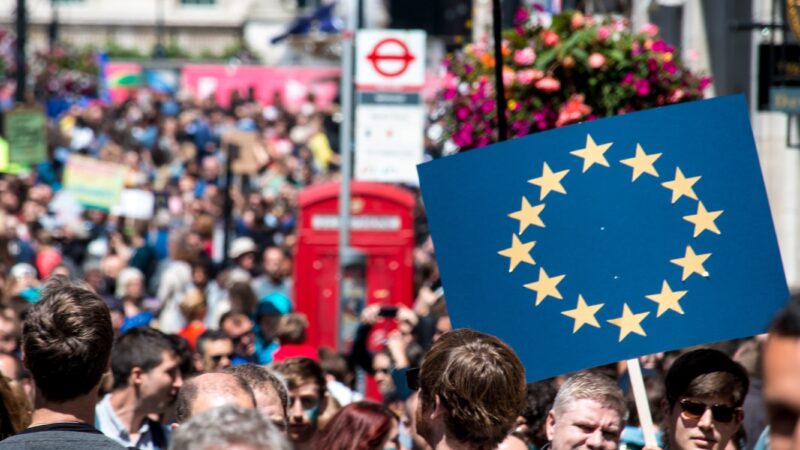The War on Pubs, Part I: Taylor’s Conquest
The war on British pubs is as old as the British pub itself, so much so it can barely be classed as an emerging tendency. The government’s dislike of the pub is a fact of life and measures to undermine its prosperity and role in society are widely disliked but are rarely contextualised in political commentary beyond the Covid pandemic, relatively recent demographic changes, and the last fourteen years of government.
After the end of WW2, Britain seemed to be largely self-sufficient when it came to producing ingredients for beer, something it hadn’t achieved for the best part of a century. Protectionist measures enabled near-autarkic levels of barley production whilst wartime reserves of hops were sold for cheap on the domestic market. Of course, post-war economic pressures made investments more necessary and demanding, whilst imports (especially from Denmark, the Netherlands, and Ireland) were set to become more frequent. Nevertheless, an end to rationing, combined with the implementation of tax cuts in the mid-to-late 50s, one of the few helping hands to pubs since the birth of Modern Britain, which contribute to an increase in beer production and consumption. All things being far from perfect, Britain’s pubs could’ve expected much worse coming out of the most destructive war in history.
Indeed, Britain’s flourishing post-war beer market hadn’t escaped the notice of Edward Plunket Taylor. Famously a breeder of racehorses, coming to be recognised as a major force behind the development of the Canadian horse-racing industry, the tycoon’s family also owned Brading, a brewery in Ottawa founded in 1867. Using the loosely coinciding repeals of prohibition throughout various parts of the US and Canada as a springboard, Taylor merged Brading with another Canadian brewery to form Canadian Breweries in 1930. In pursuit of sheer scale, Taylor consolidated several smaller plants into a handful of larger plants and standardised his line of products, whittling his number of brands down from roughly 100 to six. By 1950, Canadian Breweries controlled 50% of Ontario’s beer market. Having subdued most competition at home, Taylor was well-positioned to turn his focus to foreign conquest.
Being well over 200 years old at this point in history, criticisms of the tie system weren’t new, and they weren’t to vanish in the coming decades, but it did provide an initial barrier to Taylor’s imperial aspirations. As pubs could only sell beer produced by the brewery they were tied to, Taylor realised he’d have to infiltrate Britain’s breweries before he could infiltrate its beer market. Aiming to acquire a 25% stake in every publicly traded brewery in Britain, Taylor sought to gain a foothold in the same way he had come to dominate the Canadian market: through the purchase and merging of smaller and unprofitable breweries. In 1967, Taylor merged Bass Brewery and Charrington United to form Bass Charrington, then the largest brewery in Britain with 19% of the beer market.
Taylor’s aspirations and manifesting success sparked a merging frenzy not seen since the relaxation of beerhouse regulations in the late 19th century and the emergent ‘Beerage’, leading to the rise of ‘The Big Six’, Britain’s six largest brewing companies: Allied Breweries, Bass Charrington, Courage, Scottish and Newcastle, Watney Mann (also known as Grand Metropolitan), and Whitbread.
Whilst Taylor had managed to upend Britain’s brewing market, the tie system continued to incentivise against territorial trespassing between brewers. As such, the mergers occurred largely (albeit far from exclusively) along geographic lines. Allied Breweries and Bass Charrington were more concentrated in the Midlands and the North, both having central breweries in Burton-upon-Trent. Courage originated in Southwark with properties across the South, whilst Watney Mann originated in London with clusters in and around the capital. Fittingly, Scottish and Newcastle were based in Scotland and the Northeast, especially Edinburgh and Newcastle, whilst Whitbread originated in central London, maintaining a sizeable presence in the West End, stretching off into the southwest and much of Wales.
Counterbalancing the instinctual desire to compare The Big Six to feudal barons, their pubs were more clustered than rigidly delineated. Indeed, each brewer was a national entity and desired to expand their control of the overall market. Still, it was the emergence of these large-scale brewers which sparked concerns among small business of a cartelised industry, one in which independent brewers were fighting for an increasingly austere slice of the market.
Initial attempts to curtail the growth of these large brewers lacked momentum. Both with the government and most of the public considering the size of these brewers to be a non-issue. At the very least, it was ‘small beer’ compared to other matters which directly affected pubs and breweries in more gruesome ways. A survey carried out by the Consumers Association showed only 1% of consumers factored in beer prices when it came down to choosing a pub. Simply put, pubs were (and remain to be) more than economic hubs of rational decision-making, but markers of communal identity which provide a sense of place and evoke a sense of loyalty; something to support in a period of inept and lacklustre political leadership.
As for pub owners, many valued The Big Six (and the tie system more generally) as a way of ensuring a steady supply of beer, business, and a livelihood. Far from a barrier to entry, it was seen as the exact opposite, acting as an extension of the quasi-paternalist system which had existed prior to Taylor’s landing on English shores.
Nevertheless, the fears of independent brewers were far from unfounded. By the 1970s, roughly 80% of Britain’s beer supply was controlled by The Big Six, along with roughly 75% of brewer-owned retail, and 85% of ‘loan ties’ – arrangements in which pubs that aren’t directly owned by a Big Six brewer exclusively stock their products and other supplies for discounts and loans. By 1989, the top five best-selling beers had 20% of the total market whilst the top ten had a comfortable 30%.
Also, it became increasingly clear to many pubs that large, cut-throat corporations were not spiritual successors to small, local, historically rooted breweries. The sense of mutual dependency which existed between pubs and the latter was practically non-existent between pubs and the former. Needless to say, an individual pub had more to lose from being untied than any one of The Big Six.
Inflated beer prices were a direct consequence of this arrangement. Between 1979 and 1989, beer prices increased by 15% above the retails’ price index and the tax cuts of the immediate post-war period had long been offset by some of the highest beer duties in Europe. Even if the price of beer was comparatively less important to consumers than the social element of pubs, the financial pressure on customers to buy beer from their local’s tied brewer was far from ideal in a period of stagnating wages and rising inflation.
Pubs which weren’t tied to The Big Six were also routinely shafted by predatory pricing, in which the major brewers would temporarily lower their prices to undercut and destroy independent establishments before increasing their prices to consolidate their financial dominance in particular area. This practice was especially harmful to rural pubs, which were more likely to be independent and less economically secure than urban pubs, courtesy of a continuing trend of rural depopulation.
However, whilst the cost of beer wasn’t a pivotal concern, the wavering quality of beer was a growing source of frustration for pubgoers. Practically impervious to market forces, The Big Six were able to push less-than-appealing products onto the consumer through advertising backed by a steady and plentiful flow of cash. Courtesy of organisations like CAMRA (Campaign for Real Ale), Watney’s Red Barrel became shorthand for the extortionately priced yet wholly unremarkable (if not always terrible) concoctions one could expect from companies perceived as too big to care about the quality of their products.
Overall, the relationship between breweries and pubs was less comparable to ‘aristocratic’ noblesse oblige and more akin to the terror of mobsters and strongmen, whose promise of security wore thin as they threatened pub owners with financial ruin should they defy their heavy-handed demands. In Hobbesian terms, they were demanding obedience from people they were increasingly disinterested in protecting. This state of affairs created a seismic reaction which would change the trajectory of Britain’s pub and brewing industry, albeit not necessarily for the better; a reaction not from the market, but from the state.










The Century of Steel
Imagine a world in which there is no central structure, imagine a world where both the United States and China have fallen from a state of global hegemony to struggling to maintain any internal resemblance of order. This could occur independently of the other nation’s collapse or in tandem with it. What would the world look like? Would another world order emerge or would complete anarchy befall the world writ large? If there isn’t the time or conditions for another unipolar nation to fill this void, in part or in full, we must look for a more divided and unstable world structure. This core concept can be understood as non-polarity, where states cannot order themselves according to any traditional structure. Out of this concept, we could be entering a world of widespread turmoil and interstate violence. This can be understood as the Century of Steel (CoS), a term to help describe and articulate what we could be going through.
In order to understand the CoS, we first must look at Italian politics in the postwar years. The Years of Lead refers to a period of widespread social and political instability and violence in Italy. This period saw terrorism and assassinations become normalised from the 1960s to 1980s, the outcome of which saw government forces triumph and various far-right and far-left organisations disbanded. Notable and symbolic examples of this period include the Bologna Bombing in 1980 and the assassination of former Italian prime minister Aldo Moro. A lengthy explanation of this period can be found here.
Now, imagine a globalised version of the Italian Years of Lead taking place through a deglobalising world. Widespread interstate turmoil across nearly all regions of the world could occur. Following this, in the wake of the Coronavirus pandemic, we have seen the rise of old tensions occur once more from across the Eurasian Steppe and the Middle East. From the ‘Special Military Operation’ in Ukraine to the thinning of the Palestinian herd by Israel. The outcomes of this will look like Russia beating Ukraine, with them annexing half the country, followed by Israel becoming a pariah within the Middle East again, ending decades of peace efforts. With the collapse of the current ‘rules-based’ world order and the potential joint collapse of both major superpowers in the not-so-distant future, another avenue of what could happen needs to be explored.
One of the most underrated academics currently working is that of Yi Fuxian, who has contributed considerably to the topic of demography, especially within the context of the Asia-Pacific. In a recent Diplomat article, Yi argued that any conflict will only exacerbate the ongoing demographic issues between the aforementioned warring nations. As noted with the ongoing Russo-Ukrainian War, both nations have seen their respective fertility rates drop substantially. Likewise, if war were to break out between China and Taiwan (both nations are in considerably worse demographic situations), this would have disastrous consequences for both nations, regardless of the outcome of the conflict.
With most of the world now residing in a ‘post-fertile’ world, being below replacement level, there are fewer ‘new’ people entering into this increasingly conflictual world. What a lot of nations have now in terms of manpower is all they will have for many years to come, and when it goes, it goes. If you choose to spend it on conflict, you must accept the fact you will most likely not have anyone to replace them, creating various problems down the line. Moreover, the potential conflicts will only further perpetuate the conditions that caused states to fall into such a demographic rut in the first place.
If we are indeed becoming truly deglobalised, we could see the emergence of a new epoch. Just as the Cold War defined much of the 20th Century, the CoS may define much of the 21st. A ‘century’ of no centralised control being exerted within the world, incapable of regulating and mediating beyond a very narrow and constricted sphere of influence. This will only compound the ongoing issues being faced across the planet. We are entering very dangerous and complex times ahead for every single individual in the world and more conflicts will most likely arise in the following years as a result.
Photo Credit.